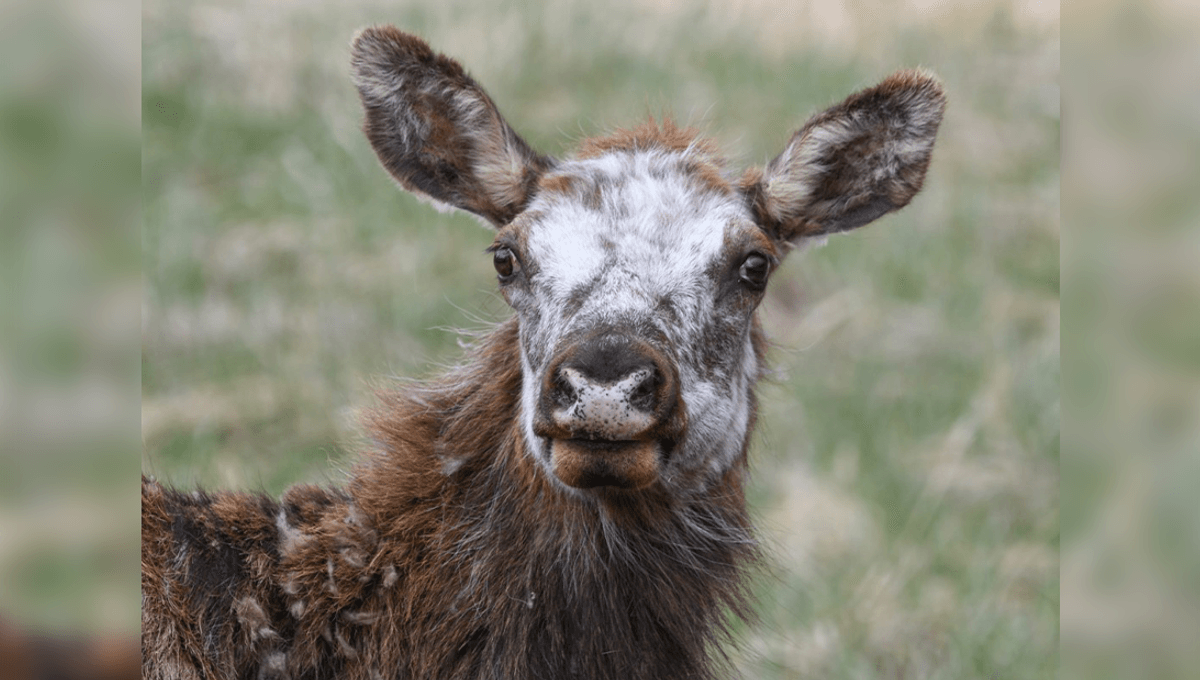
It’s not unusual to see elk in Estes Park, a Colorado town shadowed by the Rocky Mountains. As of late, however, there’s one elk in particular that’s been catching people’s eyes, thanks to its rare – and very pretty – coloring.
The female elk (also known as a cow – yes, really) in question doesn’t just have the usual rusty brown fur, but also patches of white. Some areas are more like inconsistent speckles, while others are denser and larger, such as on the cow’s head. It almost looks as if she’s been splashing about in a tin of white paint.
According to a social media post from Colorado Parks and Wildlife (CPW), this striking coloring is unusual, and can be attributed to something called piebaldism. “This rare genetic trait occurs in about 1 out of every 100,000 elk and causes a mostly white coat of hair with some patches of brown,” CPW explained.
Piebaldism can be seen in a variety of animals – not just elk, but also humans, dogs, and horses. Just last year, a piebald bottlenose dolphin was spotted in Australian waters for the first time.
At a quick glance, it could be mistaken for leucism, a condition in which animals can also have sporadic patches of white where there’s otherwise color. However, the two have different causes.
Piebaldism, as CPW mentioned, is a genetic trait, where mutations in particular genes lead to the absence of melanocytes – the cells that produce the pigment melanin – in certain areas of the skin and hair. Leucism, on the other hand, isn’t necessarily caused by genetics; it can also be caused by damage to pigment-producing cells, and those pigments can include more than just melanin.
It’s also different from vitiligo, another condition characterized by patches of white. With piebaldism, white patches are typically present from birth and don’t change after that. Vitiligo, however, typically occurs later and non-pigmented patches can spread; it’s caused by the destruction of melanocytes.
While this rare piebald elk might be a sight to behold, CPW also put out a reminder to give the cow – and other elk, for that matter – “lots of space” if you’re lucky enough to catch a glimpse. That advice applies at any time of the year, but it’s particularly important right now.
That’s because it’s the beginning of elk calving season in Colorado and nearby Wyoming, and things can get a little rowdier than the rest of the year. “Cow elk are much more aggressive toward people during the calving season and may run toward you or kick,” explained Yellowstone National Park in a social media post. “Always keep at least 25 yards [23 meters, or 75 feet], or the length of two full-sized buses, from elk.”
Source Link: Beautiful Elk Spotted In Northern Colorado Has 1-In-100,000 Coloring